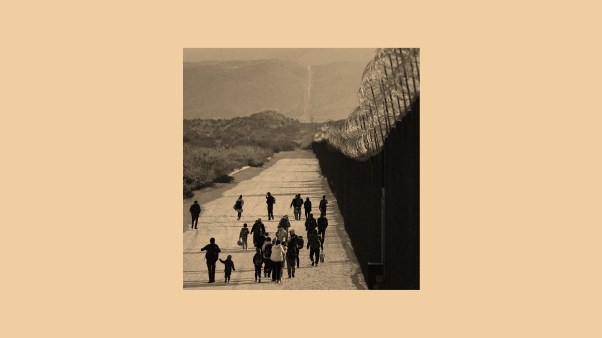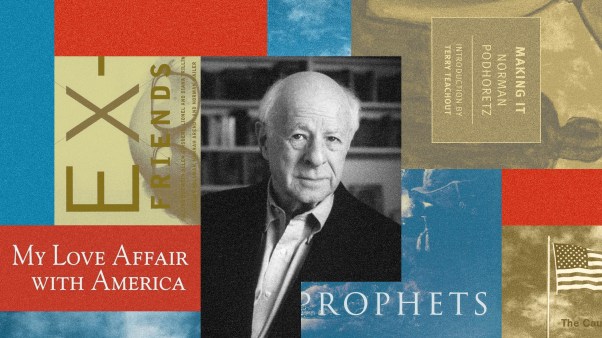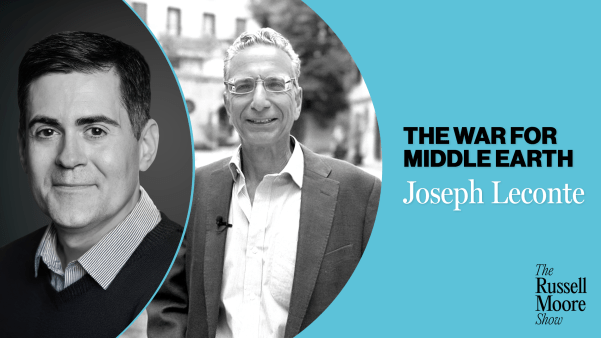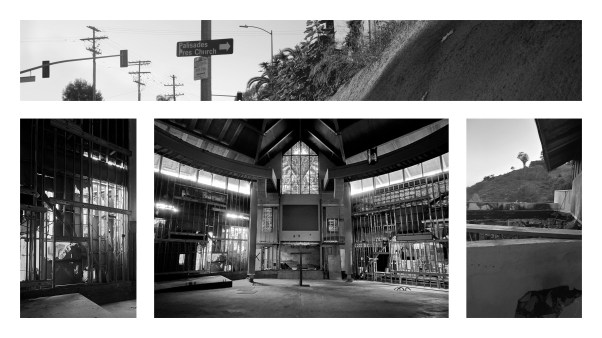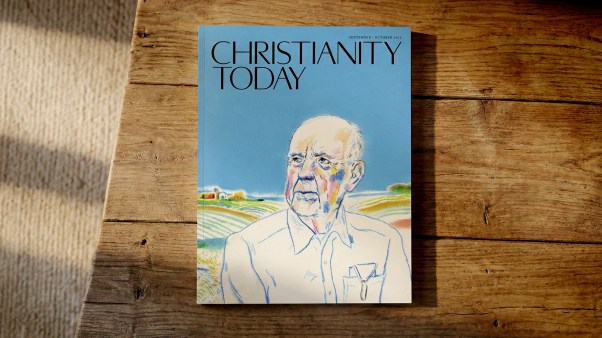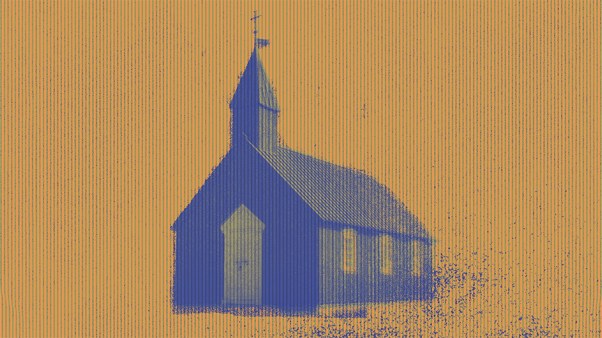‘I’m not trying to be argumentative, but there are obvious differences,” says Jason Shelton, a sociologist at the University of Texas at Arlington. He repeats his concern: “I don’t want to be provocative.”
Shelton, 42, grew up in the black church in the 1980s and ’90s. Now he’s quickly becoming one of its most prominent researchers. In 2012 he wrote (with Michael O. Emerson) a widely praised book on how black and white American Christians differ from each other. Now he’s reshaping the way American Christianity is studied and discussed by turning his attention to significant differences within the black church itself.
“As a kid who grew up in the black Methodist tradition and also went to a large Pentecostal church, I can say there’s a lot of distinctiveness between these traditions,” he says. At the same time, he says, shared experiences as black Christians in America unite black Methodists, black Pentecostals, and other black Christians in a special way. As he argued in the Journal for the Scientific Study of Religion last summer, “For blacks, the legacy of racial discrimination and inequality in America overshadows consequences of contrasting denominational affiliations.”
In that journal article, Shelton (with his UT–Arlington colleague Ryon Cobb) proposed a coding scheme for dividing African Americans into nine religious streams. Half a decade ago, it might have been received as a helpful nuance to the dominant way that sociologists, political scientists, pollsters, and others study American religion. But questions of unity, diversity, and division in the American church are not merely academic at the moment. Asking whether black Christians are on the same page with each other—let alone the same page as white Christians—seems more challenging. What unites black Christians with each other? What separates them? What unites and divides American Christians, or Christians globally? To what degree is Christian diversity division? To what degree are terms like “the black church,” “evangelicals,” or “mainline Protestants” helpful labels that identify real traditions?
To put it another way: How do we identify ourselves? Whom do we think of as our closest family members? As Paul asked the Corinthians, is Christ divided? Or in our attempts at unity, have we papered over real differences?
These are significant questions among Christians right now. It’s hard to find a major Christian conference not wrestling with them; they’re also at the center of church board discussions about congregational makeup and evangelism efforts.
Likewise, it’s hard to find an academic conference on religion not wrestling with them. In November, a panel on “Who Gets to Define Evangelicalism?” at the American Academy of Religion in Denver focused in large part on questions of whether whites and ethnic minorities could be considered part of the same movement. At the same time, the Journal for the Scientific Study of Religion was publishing a series of articles debating whether the most common way of quantifying American religious identification had distorted Americans’ understanding of evangelicals and black Christians specifically and Christians more broadly. One of the key respondents in that series: Jason Shelton.
Do black and white Christians differ?
Shelton’s 2012 book, Blacks and Whites in Christian America, had its origins in the hiring of an administrative assistant when he was a postdoctoral fellow at Rice University. He was working with Michael O. Emerson, the leading sociologist studying multiracial congregations. (Emerson is now provost at North Park University.) An African American candidate for the position, a woman we’ll call Sharon, talked openly about how she “had to talk to the Lord” before her interview—just as she does several times a day, whenever she “needed some extra strength.” She even ended the interview asking for the Lord’s mercy as she drove home in the rain. After she left, Shelton remarked that her open religiosity and her frequent prayer were not unusual among churchgoing African Americans. But he didn’t know the white experience well.
“How many white Sharons are out there?” he asked Emerson.
“Probably not too many,” Emerson replied. “Perhaps a few evangelicals.” Soon they set out to find out: Do black Christians really pray more often than white Christians? If so, why? What other differences in faith and practice might there be? And what would that say about Christianity?
The answers came from two of the most respected academic surveys, the Portraits of American Lives Survey (PALS) and the General Social Survey (GSS), along with focus groups and in-depth interviews with black clergy. (Shelton and Emerson could not get white pastors to participate in the in-depth interviews.) In short, yes: Black Christians pray more than other Christians. In fact, controlling for other background factors, Shelton and Emerson found that black Protestants pray nearly three times more often than white evangelicals do. And they are twice as likely as white evangelicals to read their Bible away from worship services and more likely to attend Bible study groups. (The Bible engagement gap evens out when controlling for church attendance and age.)
Shelton argues that past and present oppression has been the driving factor in shaping these differences. As one black focus group member told him, “We’ve had to pray more and worship more and read the Bible more to survive in an oppressive situation. … If you have had to overcome, if you’ve had to make a way out of no way, if you didn’t have any food for your children and God provided food on your table, then you’re gonna go to church and praise and worship Him because He’s worthy.”
But Shelton is also quick to argue—contrary to doubts he and Emerson heard from both white and black Christians—that black and whites indeed worship the same God. “On [survey] measures largely drawn from the orthodox Apostles’ Creed and on the centrality of faith, black and white Protestants look like identical twins,” he wrote. It’s easy to lose sight of that theological unity when you document all the ways that they differ in practicing and thinking about those core beliefs, he says. Black Protestants and white evangelicals practice their Christianity in very different ways at very different levels. But they’re both practicing Christianity.
“Efforts aimed at improving race relations will have limited success until social scientists, religious leaders, and the wider American public recognize that there are profound similarities—and most especially differences—among blacks and whites with respect to how they think about and practice their religious faith,” he wrote.
Do Methodists and Baptists differ?
Shelton still firmly believes that black Christians have more in common with other black Christians across denominations than they do with white Christians in their own denomination. That claim is a sociological truism at this point. Where Shelton is getting attention is in his proposal to measure the diversity among the multiple streams in the “Greater Black Church.”
For the last two decades, social scientists studying American Christianity have almost universally rallied to one tool in particular: a database code, abbreviated as reltrad, that uses survey respondents’ denominational “religious preference” to sort them into “religious tradition” buckets. For example, Wesleyans are coded as evangelical, United Methodists are coded as mainline, and African Methodist Episcopal Church attendees are coded as black Protestants. The other traditions in the reltrad schema are Catholic, Jewish, “other faith,” and “nonaffiliated.”
Race doesn’t usually factor into the count: If you’re white but attend an African Methodist Episcopal church, you’d get classified as “black Protestant.” But race matters in reltrad when respondents say things like they’re Methodist, but they don’t know which kind. And African American Baptists are counted as black Protestants even if they say they’re Southern Baptists or American Baptists. “Most blacks who belong to these denominations attend predominantly black Baptist churches,” argued the reltrad sociologists, led by Brian Steensland. “And most black Baptist churches in the American and Southern Baptist Conventions have a dual affiliation status with other black Baptist denominations.”
There are other ways to divide American Christians into groups. Many public opinion polls break out evangelical Protestants by asking, “Do you consider yourself an evangelical or born-again Christian?” then omit any Catholics or African Americans from those who said yes. Other surveys (like those from Barna and LifeWay) ask a series of questions about theology and religious practices. But when scholars talk about religious data today, they almost always separate black and white Protestants in some form. And reltrad has become, in many researchers’ words, the gold standard.
“Reltrad itself is the greatest thing since sliced bread for a nerdy academic like me,” Shelton says. But as an African American, he says, reltrad’s lumping together all black Protestants is its “biggest limitation.” Just as old surveys might only indicate whether a respondent was a Protestant, Catholic, or Jew and miss the complexity in various traditions, when you split Protestants into evangelical, mainline, and black, “you’re missing a lot of the unique traditions and distinctions,” he says.
So he and Cobb created a “black reltrad” that identifies nine categories for identifying African Americans: Baptists, Methodists, Holiness/Pentecostals, historically white mainline Protestant denominations, historically white evangelical Protestant denominations, nondenominational Protestants, Catholics, other faiths (including Mormons and Jehovah’s Witnesses), and respondents with no religious affiliation.
To work, “black reltrad” needs big datasets with a large number of black respondents. That will limit some of its adoption, says Tobin Grant, a political science professor at Southern Illinois University and editor of the Journal for the Scientific Study of Religion. But there are plenty of large-scale studies like the GSS ready to be mined. The real test for black reltrad, Grant says, will be in its explanatory power and in its ability to find real differences between those categories.
“If black reltrad just said historically these are different groups, but empirically I couldn’t find any differences, I probably wouldn’t use it in a study,” he said. And the differences matter. “If you tell me that the Pentecostals are more likely to believe miracles happen today, or that the Baptists believe in adult baptism, you’re not telling us much.”
But Shelton and Cobb are already finding significant differences, including a kind of mirroring of the evangelical-mainline split among historically white churches. Nondenominational Protestants, Holiness/Pentecostals, and members of historically white evangelical denominations are far more likely to have conservative views on sexual morality than Baptists, Methodists, and blacks in historically white mainline Protestant denominations. In fact, the Baptists, Methodists, and blacks in white mainline churches seem not to differ in their sexual ethics from African Americans who don’t have a religious preference. Shelton and Cobb found a similar split on abortion.
But on other measures, Shelton and Cobb think that there’s less of a split between conservative and liberal black Protestants and more of a spectrum. Baptists and Methodists (who don’t differ from each other on many of the issues the researchers looked at so far) occupy a kind of “moderate Protestant” middle between the black members of historically white mainline Protestant denominations and the more conservative groups, like Holiness/Pentecostals, nondenominational Protestants, and members of historically white evangelical denominations.
Maybe for smaller surveys where there aren’t enough black respondents to divide into nine categories, Shelton and Cobb ventured, it might be possible to collapse the categories down to three: “liberal, moderate, and conservative.” But this would potentially conceal a lot of the meaningful differences that black reltrad was created to identify, they warned.
The question at the heart of that suggestion—how many groups can you reasonably condense American Protestants down to without misrepresenting reality—is at the heart of a heated argument that has long been simmering in the field of the sociology of religion. And in late 2018, the fight went public.
Sociologists definitely differ
Darren Sherkat, an influential sociologist of religion at Southern Illinois University, does not think that reltrad is the greatest thing since sliced bread. In 2016 he posted a working paper (coauthored with Derek Lehman, now at Tarleton State University) called “After the Resurrection: The Field of the Sociology of Religion in the United States.” On his blog, he used a more succinct title: “Why Reltrad Sucks.”
In the paper, he describes a cabal of religious sociologists in the early 20th century who took over the sociology of religion “to the advantage of particular types of religious believers.” In his telling, modern scientific surveys in the late 20th century helped to rescue the field from religious sociologists. “Yet, the ascendance of the field had not purged it of the sources of marginalization,” he lamented. “The entry of religious conservatives into the field destabilized the sociology of religion.”
Sherkat identifies few of these younger “religious conservatives” other than Notre Dame’s Christian Smith, though it’s clear that among his chief targets are Steensland and his reltrad coauthors: Jerry Park, Mark Regnerus, Lynn Robinson, Brad Wilcox, and Robert Woodberry. His criticisms of the cohort are legion. “[S]trategic action . . . has pushed most research into peculiar applied paths in the service of Christian religion, while pushing away inquiry into topics deemed unseemly by those who possess the social capital skill sets valued in religious circles,” he says. But his chief fight is with their reltrad work. By labeling groups like Missouri and Wisconsin Synod Lutherans and high-attendance nondenominational Christians as evangelical Protestants, reltrad “served to increase the size of the ‘evangelical’ group, while also making them more educated, higher income, and less extreme in political and religious orientations.”
Reltrad, Sherkat argued, was part of the sociologists’ efforts to push a “narrative of a ‘collapsing middle’ and culture wars between ‘orthodox’ and by implication ‘unorthodox’ Protestants.” The coding scheme, he claimed on his blog, constitutes “sociological malfeasance—and the gaggle of conservative Christians who concocted this misclassification did this for their own divine purpose, not for sociological clarity.”
The working paper sat online mostly as a jeremiad for a few years, but last summer a significantly reworked and less caustic version appeared in the peer-reviewed Journal for the Scientific Study of Religion (JSSR) with Lehman listed as the primary author. The new paper also included an alternative way to code American Protestantism—emphasizing denominational families. Episcopalians and liberal Protestants make up one end of the spectrum; moderate Protestants, Lutherans, and nondenominational Protestants sit in the middle; “Baptists and sectarian Protestants” are on the other far end. The liberal/moderate/sectarian split, they argued, could be worked out by the degree to which the denominations believe “that only those who follow their faith will receive supernatural rewards, while all others will suffer eternal punishment.”
By late October, JSSR had published several responses and follow-ups to the article. In their pieces, Lehman and Sherkat argued against using the terms “evangelical” or “born-again Christian” as religious identifiers and defended their use of “sectarian” as an alternative, even as they acknowledged that most of the people they put in that category would find such a label pejorative. If the shoe fits, they argued. The “essential and permanent aspects of religion that generated these identities,” the sociologists promised, “will likely forge the next white Christian nationalist identity marker.”
In their response, reltrad authors Steensland, Woodberry, and Park questioned “treating entire denominational families as monolithic rather than acknowledging the diversity within them.” Are American Baptists sectarian exclusivists just because they’re Baptists? Are Orthodox Presbyterians liberal because they’re Presbyterians? Reltrad, by contrast, acknowledges the “history, institutional ties, beliefs, and practices that are bound up in religious traditions,” they said. “But we affirm the potential benefits of having multiple classification schemes available to scholars. … Read sympathetically, this is the core of what [Lehman and Sherkat] sought to do.”
Steensland and his reltrad coauthors had one more critique: Unlike reltrad, in the new proposal, “one of the most important social pillars of African-American life and progress is rendered invisible.”
Shelton, who was also invited to respond to the JSSR forum, was not quite so critical, but said reltrad does a better job of accounting “for the power of race in American religion.” It’s not a perfect scheme, he said, and Lehman and Sherkat’s scheme does “suggest that the religious ‘middle’ remains intact.” But for now, he said, reltrad remains the gold standard.
Shelton added another note: After comparing reltrad with the Lehman/Sherkat scheme, he concluded that there is “strong support for the classic assertion that black Protestants have more in common with one another than they do with white Protestants—including those of the same denomination.”
In his black reltrad article, Shelton seemed to start leaning the other way. Against the conclusions of his earlier book, he suggested there may be “limits to the established conclusion that black Protestants have more in common with one another than they do with white Protestants.”
I asked him where he is on the question now. “We still might find those limits,” he says. “I want to leave that door open. But when you compare, for example, black Methodists and white Methodists, they’re so far apart it’s crystal clear statistically that the black Methodists have more in common with other black Protestants.”
But that might be changing, he says. Affiliation with historically black denominations is falling rapidly, from 57 percent to 45 percent. “The black Methodist tradition is losing people left and right,” he says. “Out of 100 black adults, only 4 are members of the black Methodist tradition now.” Meanwhile, non-denominational affiliation is up. A forthcoming paper from his colleague, Ryon Cobb, is showing that African Americans with a college degree and whites with a college degree are now far more likely to attend racially integrated churches than they were a few years ago.
The two schools of thought on the black church—one that emphasizes ethnic unity and shared history of oppression and another that emphasizes theological unity and shared ecclesial history—both have a lot of truth to back them up, says Grant, the journal editor. But unity and difference can be tricky things, he says.
Around Southern Illinois University, where he teaches, about a dozen of the 70 churches are historically black congregations, he says. “They formed a black ministerium and met a lot. Then one guy made the mistake of suggesting they have Communion together and the whole thing fell apart. People said, ‘I’ll still have lunch with you.’ But once one guy says, ‘I’m not having Communion with you,’ it’s going to fall apart.
“We know the particulars matter if we’re trying to understand anything about religion,” Grant says. “The question in all of this is how we capture which particulars really matter.”
Ted Olsen is editorial director of Christianity Today.
Have something to say about this topic? Let us know here.



